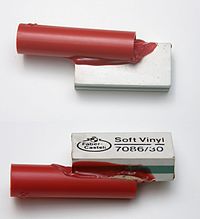
Control the Mechanical Properties and Degradation of Poly(Glycerol Sebacate) by Substitution of the Hydroxyl Groups with Palmitates.
Sign Up to like & getrecommendations! Published in 2020 at "Macromolecular bioscience"
DOI: 10.1002/mabi.202000101
Abstract: Mechanical properties and degradation profile are important parameters for the applications of biodegradable polyester such as poly(glycerol sebacate) in biomedical engineering. Here, a strategy is reported to make palmitate functionalized poly(glycerol sebacate) (PPGS) to alter… read more here.
Keywords: mechanical properties; glycerol sebacate; properties degradation; poly glycerol ... See more keywords

Synthesis of biodegradable Zn-based scaffolds using NaCl templates: Relationship between porosity, compressive properties and degradation behavior
Sign Up to like & getrecommendations! Published in 2018 at "Materials Characterization"
DOI: 10.1016/j.matchar.2018.01.033
Abstract: Abstract Recently, Zn-based alloys are attracting intensive interest as biodegradable biomaterials. Their moderate degradation rate makes them a better potential candidate for porous scaffolds than Mg-based alloys. In this study, hot press sintering (HPS) was… read more here.
Keywords: porosity; nacl templates; degradation behavior; compressive properties ... See more keywords

Properties and degradation of manganese(III) porphyrin thin films formed by high vacuum sublimation
Sign Up to like & getrecommendations! Published in 2019 at "Journal of Porphyrins and Phthalocyanines"
DOI: 10.1142/s1088424619501700
Abstract: Manganese porphyrins are of interest due to the optical, electronic and magnetic properties of the central metal ion, coupled to the low bandgap of the polyaromatic ring. These attractive character... read more here.
Keywords: manganese iii; thin films; porphyrin thin; iii porphyrin ... See more keywords

Alloying and Processing Effects on the Microstructure, Mechanical Properties, and Degradation Behavior of Extruded Magnesium Alloys Containing Calcium, Cerium, or Silver
Sign Up to like & getrecommendations! Published in 2020 at "Materials"
DOI: 10.3390/ma13020391
Abstract: Magnesium alloys attract attention as degradable implant materials due to their adjustable corrosion properties and biocompatibility. In the last few decades, especially wrought magnesium alloys with enhanced mechanical properties have been developed, with the main… read more here.
Keywords: alloying processing; degradation behavior; magnesium alloys; mechanical properties ... See more keywords